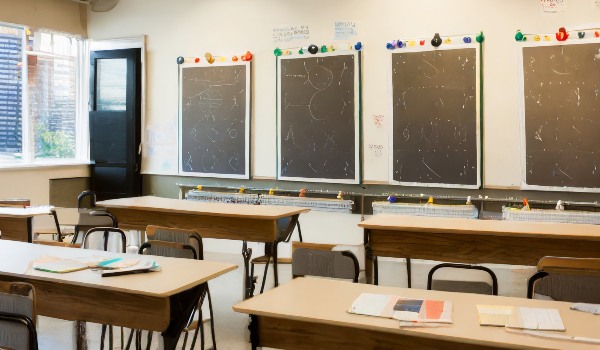Teaching is undeniably one of the most challenging and demanding professions in the world*. Juggling lesson plans, managing student needs, extracurricular activities, and a multitude of other tasks can make a teacher feel overwhelmed and stretched for time.
Whether you are new to teaching or a seasoned teacher, these time-saving hacks can help you streamline your workload more efficiently.
Felicity Rea, an experienced teacher, school leader and Learning Consultant for OfficeMax, shares six tips that will help optimise your workflow and add extra hours to your week.
1. Create interchangeable display board
Classroom displays can brighten up a room. It's a great way to acknowledge the students’ contributions and elevate their self-esteem. Setting up borders for artwork or even frames where students can swap out their artwork or writing samples without mounting each new piece saves you tons of time.

2. Beginning teacher support programme:
The transition from student-teacher to teacher can be daunting. Remember that your colleagues have all been in your shoes and are there to support and guide you.
- Make the most of your non-contact time by observing your mentor and other colleagues around the school.
- Watching colleagues teaching in year groups above or below you is a great idea as the year progresses and you become more confident with your year group. It will help you solidify your understanding of what comes before and after what you are currently teaching.
- When possible, ask your release teacher to take your mentor's class so your mentor can observe you in the classroom. Agree on an observation focus, reflect on this, and ask your mentor questions.
- Connect with recently fully registered teachers in your school or community and discuss how they managed and evidenced their Provisionally Registered Teachers (PRT) program.
- Set your work/life boundaries early. Your school may already have a policy regarding after-hours contact. If you are unsure, ask your mentor or principal. It is healthy and acceptable to only read and respond to emails during agreed-upon work hours.
3. Make Google apps your assistant:
- Note-taking apps like Google Keep help you instantly capture, label, and categorise your thoughts. Assign a different colour code to every category, such as lesson plans, to-do lists, checklists, etc., and visually organise your ideas and projects.
- You can access your notes conveniently anytime on your mobile, tablet or laptop devices instead of scouring through your notebook or misplaced sticky notes.
- The Voice-to-text transcribe feature on Google Keep or via free apps on your device's app store allows you to dictate your thoughts and plans – and it transcribes word to word. You can refine your transcribed text and save a substantial amount of time instead of writing from scratch.

4. Classroom organisation and labelling: A well-organised classroom encourages discipline and makes it easier for students to learn and focus.
- A classroom with many learning tools should have a clear 'home' visible and easily accessible.
- It helps students use and return the tools in their designated places and saves time cleaning and reorganising a messy classroom every period.
- Proper labelling, including images, helps prevent misplacing them. This saves time and reduces an extra activity for you.
- Putting hoop and loop fasteners on your tote trays makes it easy to interchange labels, increasing classroom efficiency.

5. Resources template platform:
- Try a global resources platform tailored to the New Zealand curriculum to organise lesson plans for your classroom.
- The templates and resources from teacher support platforms such as Twinkl, TeachersPayTeachers (TPT), and more will help you plan your lessons on different subjects tailored to each year's level.
6. Pool lesson plans: Collaborative teaching or sharing resources helps reduce lesson planning for teachers and fosters a growth-based learning environment for the students.
- Reduces strain on individual teachers and saves time.
- Teachers learn from and with each other on an ongoing basis.
- A break from working in isolation in the staffroom.
- Pooling lesson plans can help try different approaches and outcomes.

*Teachers having to work harder than any other professionals, says study
**Read more about the Beginning Teacher Support Programme